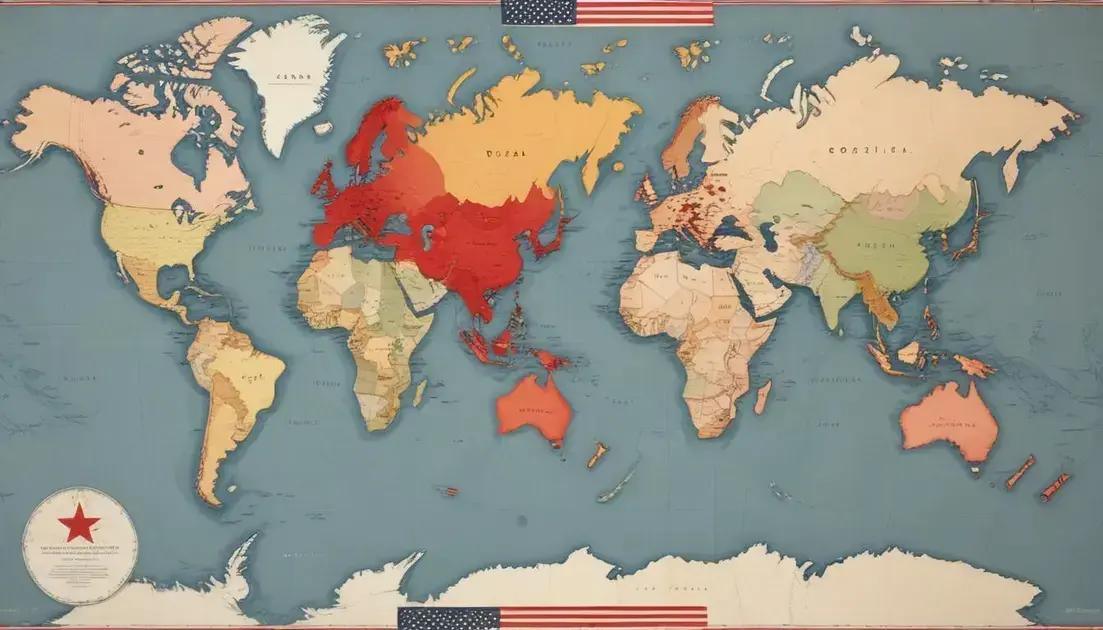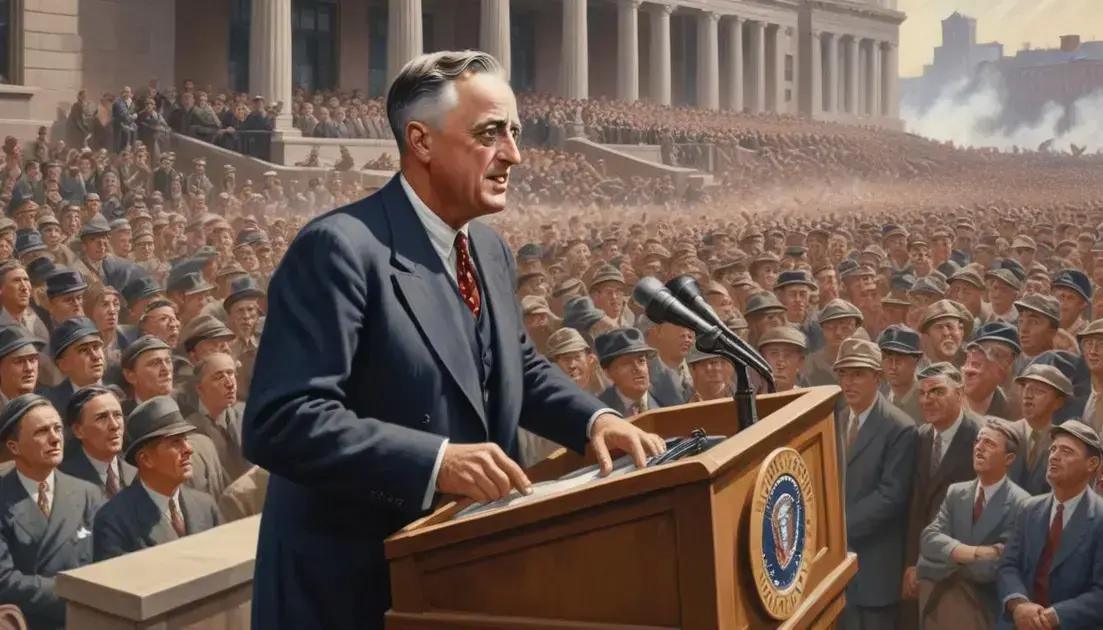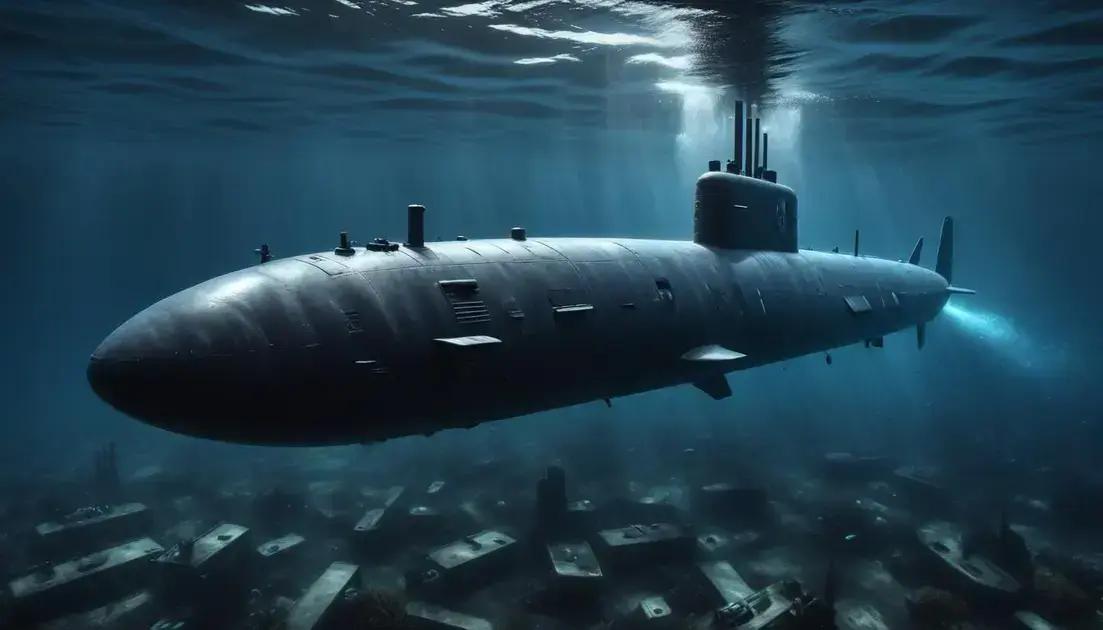
What Was the Cold War? Summary of the Ideological Conflict USA vs USSR
The Cold War was a significant period marked by political tension between the United States and the Soviet Union, characterized by key events such as the Korean War, Cuban Missile Crisis, and the arms race. It profoundly influenced global politics, culture, and society, leaving a legacy that still shapes international relations today, including the rise of military alliances like NATO and the ongoing challenges in post-Soviet states. The end of the Cold War was symbolized by the fall of the Berlin Wall and the dissolution of the Soviet Union, highlighting the importance of diplomacy and cooperation in maintaining peace.
Cold War was a defining conflict of the 20th century, captivating minds and shaping nations. Explore its complexities and enduring influence!
The origins of the Cold War
The origins of the Cold War lie in the aftermath of World War II. After the war, tensions grew between the United States and the Soviet Union. They had fought together against a common enemy, but their visions for the future were very different.
The U.S. promoted capitalism and democracy, while the USSR supported communism. This clash of ideologies created a rift. As both nations emerged as superpowers, they began to compete for influence around the world.
Key Events Leading to Tension
Several key events marked the early stages of the Cold War. The Truman Doctrine, introduced in 1947, aimed to contain communism by providing support to countries resisting Soviet influence. Marshall Plan, also launched in 1947, helped rebuild Western European economies, but it angered the USSR.
The Iron Curtain
In 1946, Winston Churchill famously talked about the “Iron Curtain.” This term described the division between Western democracies and Eastern communist nations. The Iron Curtain symbolized the growing divide in Europe. Countries in Eastern Europe fell under the control of Soviet-backed regimes.
The Berlin Blockade
One of the first major crises was the Berlin Blockade in 1948. The USSR blocked all ground routes to West Berlin. In response, the U.S. and its allies launched the Berlin Airlift, supplying the city with food and resources for nearly a year.
These events highlighted the deepening divide between the two sides. Trust was lost, and conflict seemed inevitable. Understanding the origins of the Cold War helps explain how this tension shaped global politics for decades to come.
Key events and moments
The Cold War was marked by several key events and moments that defined its course. Each incident heightened tensions between the United States and the Soviet Union.
One major event was the Korean War, which began in 1950. North Korea, supported by the USSR and China, invaded South Korea. The United States quickly intervened, leading to a prolonged conflict that saw millions of casualties.
The Cuban Missile Crisis
In 1962, the Cuban Missile Crisis brought the world to the brink of nuclear war. The U.S. discovered Soviet missiles in Cuba, just 90 miles from its shores. This event pushed both superpowers to reconsider their aggressive strategies and avoid direct military confrontation.
The Vietnam War
The Vietnam War was another significant conflict during the Cold War. It lasted from the late 1950s to 1975. The U.S. aimed to stop the spread of communism, while North Vietnam fought to unify the country under a communist government. This war led to widespread protests in the U.S. and significant casualties.
Space Race
The Space Race also marked the Cold War era. It symbolized the technological competition between the two nations. The launch of Sputnik by the USSR in 1957 shocked the U.S. and marked the start of the space race. The Apollo Moon landing in 1969 was a significant victory for the U.S.
Each of these key events shaped public perception and global politics. They highlighted the intense rivalry and the potential consequences of nuclear conflict. Understanding these moments is crucial to grasp the complexity of the Cold War.
Impact on global politics
The impact on global politics during the Cold War was profound and lasting. This era reshaped how nations interacted with each other on multiple levels. It established a new framework for international relations.
One major impact was the formation of military alliances. The U.S. led NATO, the North Atlantic Treaty Organization, to counter Soviet influence. In response, the USSR created the Warsaw Pact with its allies. These alliances created clear divisions in global politics.
Decolonization and Cold War Politics
The Cold War also influenced decolonization in Africa and Asia. Many newly independent countries were caught in the rivalry. They had to choose sides, often leading to conflicts. This situation made global politics more complicated as nations navigated between the superpowers.
Proxy Wars
Proxy wars were another significant aspect. Instead of fighting directly, the U.S. and USSR supported different sides in local conflicts. In places like Vietnam and Afghanistan, their influence was evident. These wars often had devastating effects on the local populations.
Arms Race and Diplomacy
The arms race escalated during this time. Both superpowers built up nuclear arsenals, leading to fear and tension. However, this threat also led to arms control agreements like SALT and START. These agreements showed that diplomacy could work, even amid strong rivalry.
Overall, the Cold War shaped modern geopolitics. It established patterns in international relations that still affect us today. Understanding this impact is crucial for grasping current global issues.
Cultural repercussions
The cultural repercussions of the Cold War were significant and wide-ranging. Art, literature, and cinema all reflected the tension between the superpowers. Many cultural works explored themes of fear, distrust, and the possibility of nuclear war.
During this time, propaganda became a crucial tool. Each side sought to shape public opinion through films, music, and posters. American movies like “Dr. Strangelove” highlighted the absurdity of nuclear war. Meanwhile, Soviet films often glorified their way of life and ideology.
Ideological Influence on Society
Cold War ideologies affected daily life. In America, there was a strong sense of patriotism. People were encouraged to support the government and their military. In contrast, many in the USSR embraced communism as a path to equality and strength. This divide influenced family life, education, and social norms.
The Rise of Counterculture
The Cold War also sparked movements and countercultures. In the U.S., the Beat Generation emerged, challenging traditional values. Later, the 1960s saw protests against the Vietnam War. These movements reflected a growing skepticism about government actions and policies.
Global Cultural Exchange
Despite the divide, the Cold War facilitated cultural exchange. The U.S. and USSR engaged in cultural diplomacy. They sent artists, musicians, and athletes to showcase their achievements and promote their ideals. This exchange allowed a glimpse into each culture, fostering curiosity despite the tension.
In summary, the Cold War’s impact on culture shaped how people viewed each other. It affected art, literature, and social movements, leaving a lasting legacy in the global cultural landscape.
The end of the Cold War and legacy
The end of the Cold War marked a significant shift in global politics. It began with a series of events that showed the weakening of Soviet power. By the late 1980s, reforms in the USSR, led by Mikhail Gorbachev, aimed to modernize the nation. His policies of perestroika (restructuring) and glasnost (openness) sought to improve the economy and allow more freedom.
In Eastern Europe, people began to protest against communist regimes. The fall of the Berlin Wall in 1989 became a powerful symbol. It represented the collapse of communist control in East Germany and was a key moment in ending the Cold War.
The Dissolution of the Soviet Union
By 1991, the Soviet Union officially dissolved. This event shattered the notion of a bipolar world. Many former Soviet states became independent nations, changing the map of Europe and Asia.
Legacy of the Cold War
The legacy of the Cold War still affects international relations today. New conflicts have emerged as former Soviet states navigate their identities. NATO expanded eastward, leading to tensions with Russia, reminding us of past rivalries.
Culturally, the Cold War left a lasting impact on art and media. Movies, literature, and music reflecting that era continue to resonate with audiences. They serve as reminders of the fears and aspirations of a world divided.
In conclusion, the end of the Cold War reshaped the political landscape. It highlighted the importance of diplomacy and understanding in a globalized world. This legacy continues to influence how nations interact and cooperate today.
Conclusion
In conclusion, the Cold War was not just a period of tension but a time that shaped the world we live in today. From the key events that defined it to the cultural impacts and the eventual end of the conflict, each aspect played a role in global history. Understanding this era helps us see how nations interact and the lessons learned about peace and diplomacy.
The end of the Cold War reshaped borders and opened new possibilities for cooperation. Its legacy remains, influencing political relationships and cultural expressions. By reflecting on the Cold War, we can appreciate the importance of dialogue and unity in a world that continues to face challenges.


